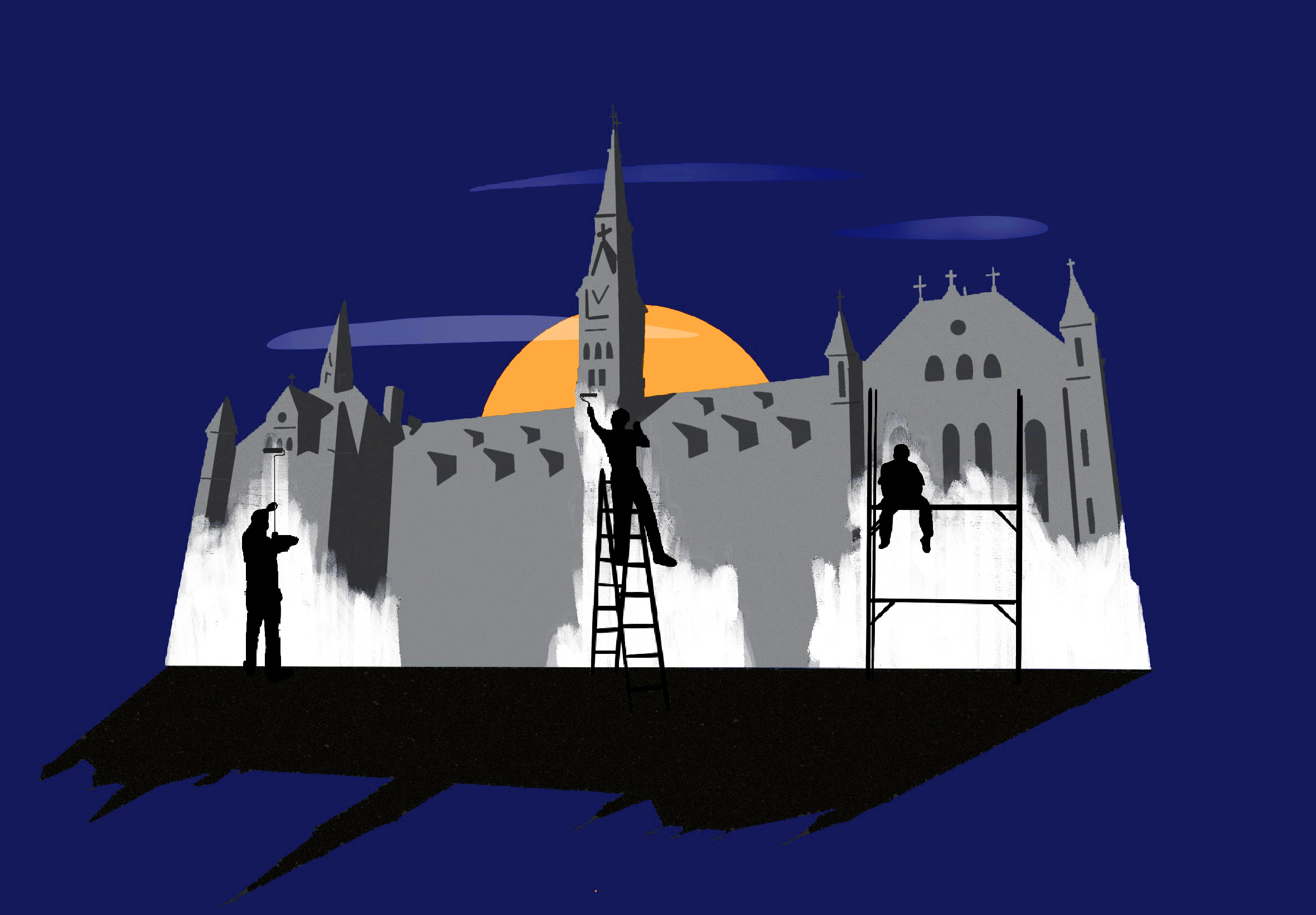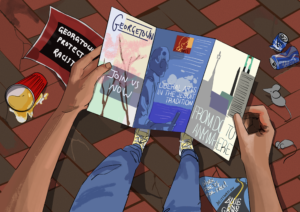In 1876, 11 years after the end of the Civil War, Georgetown’s Committee on Colors announced it had chosen blue and gray for the uniforms of Georgetown College’s Boat Club. Their reasoning? To express “the feeling of unity that exists between the Northern and Southern boys of the College,” as the June 1876 edition of the College Journal put it. Later adopted officially by the school in the same year, blue and gray have since become inseparable from Georgetown’s identity.
The colors, however, harken to the original uniforms of the Union and Confederacy respectively, supposedly purporting “unity” between the North and South. It is past time for the university to stop honoring enslavement and white supremacy in its symbols—blue and gray must go.
The colors conceal the insidious truth that Hoyas overwhelmingly supported the Confederacy, and by extension, the institution of slavery. Confederate soldiers disproportionately represented Georgetown’s student body; of approximately 1,100 Georgetown students who fought in the Civil War, 900 fought on the side of the Confederacy. Moreover, many of Georgetown’s founders—like John Carroll and William Gaston—enslaved hundreds of families and exploited their labor to unwillingly construct much of the university as we know it. Georgetown’s financial survival in the 1830s, made possible by the sale of over 300 Black men, women, and children, underlines how the university owes its existence to the enslavement of Black people. The celebration of the university through its colors blue and gray is directly tied to its support of slavery and ignores the harm the university has directly inflicted and continues to perpetuate.
The Editorial Board calls on Georgetown to change the school’s colors from blue and gray. To do so, the university must form a new Committee on Colors that would include descendants of the people Georgetown enslaved, the people most impacted by Georgetown’s racist history—and individuals who have already called for the colors to be changed. This change is long overdue—Georgetown must tear down the monuments to its legacy of enslavement.
It may be said that blue and gray are just colors, but when these colors are flaunted on jerseys, touted in our fight song, and adopted by our titular tour guide organization, they are, in effect, not far from a monument. Monuments enshrine an institution’s values. In this sense, the university elevates a false sense of unity while dismissing the injustice of slavery. Blue and gray may be so ubiquitous in our environment that we neglect to think about what they mean, but they are far from just colors. Rather, these colors, especially gray, are inseparable from the university’s history of white supremacy and enslavement.
In honoring the postwar unity and veterans from the North and South, Georgetown is actively ignoring what the Confederacy actually stood for: the right to enslave other people. Information about the meaning behind blue and gray is not widely disseminated on university websites, aside from a small subpage on the Georgetown library website. And although the school colors blue and gray are the namesake of Georgetown’s Blue & Gray Tour Guide Society, nowhere on its official website or its fall 2022 tour manual are there explicit mentions of the origin of the colors. Prospective and current students, along with other members of the community, are not explicitly told what these colors mean. This information essentially isn’t available unless intentionally sought out.
Beyond the school’s colors, many students remain unaware of other racist symbols on campus, from the statue of John Carroll to buildings that bear the names of colonizers and enslavers. That isn’t to say there isn’t some responsibility on students to educate themselves. However, through failing to explain the history of the colors on most of its public websites, in its classrooms, and at its athletic events, Georgetown has created an environment where students, especially those with white privilege, can spend four years without considering the weight of Georgetown’s oppression of Black people.
Georgetown isn’t just shrouding its historical ties with the Confederacy, it is also tacitly legitimizing them. Specifically, a plaque in New North commemorating the Civil War Centennial at Georgetown, erected in 1961 by the Georgetown University Alumni Association, suggests that both causes of the Union and the Confederacy were righteous and noble. The plaque reads: “From 1861 to 1865, in America’s tragic epic of the Civil War, 1138 sons of Georgetown in blue or in gray offered themselves on the altar of patriotism in the defense of the constitutional rights to which they were bound in conscience.”
This tribute to the Confederacy whitewashes the causes of the Civil War, portraying the Confederacy as a patriotic fight for righteous causes rather than as a horrific attempt to preserve and institutionalize slavery and white supremacy.
The financial cost and logistical challenge of rebranding all of Georgetown’s public-facing and internal branding may possibly deter university leadership from pursuing a change in school colors. Nevertheless, the Editorial Board believes that removing symbols that celebrate the university’s past of slavery and white supremacy is worth the effort and potential expense. Other institutions have made similar moves to remove or change symbols that honor colonization and enslavement.
As recently as last year, George Washington University committed to discontinuing the use of the Colonials moniker. The Washington Commanders changed their name from the Washington Redskins, a change long called for by Indigenous activists at the forefront of a global movement against racial injustice. Ryerson University changed its name to Toronto University following widespread protests and the toppling of a statue of Egerton Ryerson, an architect of Canada’s residential school system, which contributed to the genocide of many Indigenous communities. Changing Georgetown’s colors is not a radical idea, but rather a long-overdue reckoning with the university’s legacies of racism and colonialism.
University leadership must take decisive steps to incorporate Georgetown’s history of enslavement into its public narrative. The first step is to create a working group, including members of Georgetown’s numerous descendant communities, to discuss what to change the colors to; this committee’s recommendation should be approved through a student referendum. Georgetown’s Blue & Gray Tour Guide Society could also lead the charge by changing its name. Georgetown must further publicize the history and meaning of the blue and gray on its official websites and explain to the community why this working group is being formed through campuswide communications and updates. All members of our community must engage with this shared past during our time at Georgetown—and that starts with understanding the meaning behind the colors we wear.




